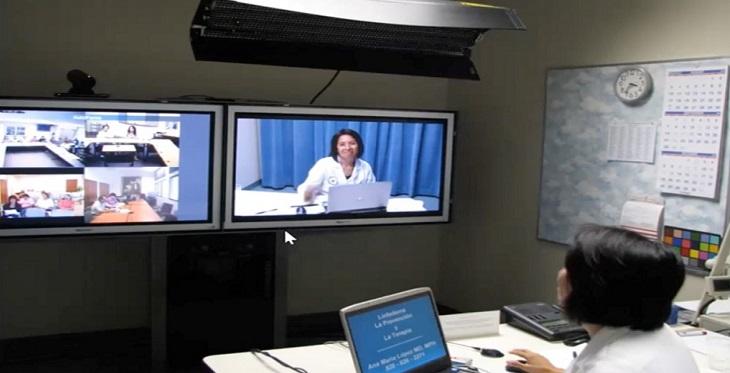
The Southwest Telehealth Resource Center (SWTRC) and the Arizona Telemedicine Program (ATP) had the pleasure of working with the United Way of Weld County, CO to provide a webinar to their membership on November 6, 2020. “Effectively Engaging Families in Telehealth” was a very informative and addressed one of the most asked questions about telehealth, how does a provider build an intrapersonal relationship through a screen? Janet Major, Associate Director for Education & Facilities for SWTRC/ATP and Dr. Elizabeth Krupinski, Co-Director, STWRC addressed this question with the central message being that physicians and their support staff need to prepare for each telehealth visit. If a provider is prepared, the visit should go smoothly and an intrapersonal relationship can be established just like an in person visit.
Dr. Krupinski explained that to be prepared providers must consider how they can interact with the patients’ six senses (the sixth being a patient’s gut instinct). Considering all six senses ensures the provider can make the visit comfortable and “real” as possible. Key to any visit is establishing eye contact with patients and their families. This takes some practice because providers need to remember that the camera is generally located above the monitor, yet the image of the patient is in the center of the monitor. Thus, if the provider always looks at the image of the patient, the patient will not see the provider looking them in the eye but rather looking slightly down! Providers need to remember that in order to establish good eye contact (essential to rapport) they need to look at the camera every now and then. The senses of sight and sound obviously play the most important roles in a telehealth visit, but new technology is being developed so the other senses can also come into play as with an in-person visit. Smell is being integrated via odor sensors in computers and even touch via kinetic sensors is being innovated.
Since these new technologies are still expensive and not mainstream, physicians (and other healthcare professionals) need to pay attention to the “lights, camera, action” aspect that contributes to a good telemedicine encounter. The “lights, camera, action” portion of the visit includes proper lighting (not from behind), camera position, and a working and clear microphone along with any other technology needed for the visit. Both Dr. Krupinski and Ms. Major spent a lot of time going over the proper “lights, camera, action” for a telehealth visit. According to Dr. Krupinski, “If you can’t see the patient’s face well or they can’t see yours it’s going to be harder to make a good, trusting connection with them!”
Ms. Major also went over how it is important for providers to make sure a patient understands how to use the technology beforehand so the visit is efficient, low stress and a good experience. She explained that providers also need to practice and do mock visits to understand the ropes of a telehealth since it is a different atmosphere. Fortunately, as Ms. Major mentioned, “the Warren Clinic at the Arizona Telemedicine Program gives providers a setting where they can learn and practice their telemedicine etiquette or ‘telemediquette’ skills”.
The webinar ended noting that not everything changes from an in-person visit to a telehealth visit. For example, visit privacy expectations still remains the same. If an adolescent is having a televisit it may be appropriate for the physician to ask the parent to leave. If a mother has loud, distracting children in the background, it may be appropriate to ask her if someone else could look after her children for 15 minutes if possible.
In conclusion, to effectively engage with families with telehealth it is important to prepare on the part of the provider and clinic. Preparation includes a possible pre-connect with the patient, proper lighting/sound/camera angle during the visit, and patient and provider education about telemedicine and the technology used. To view the recording of this webinar please visit the ATP website’s library of recordings.


